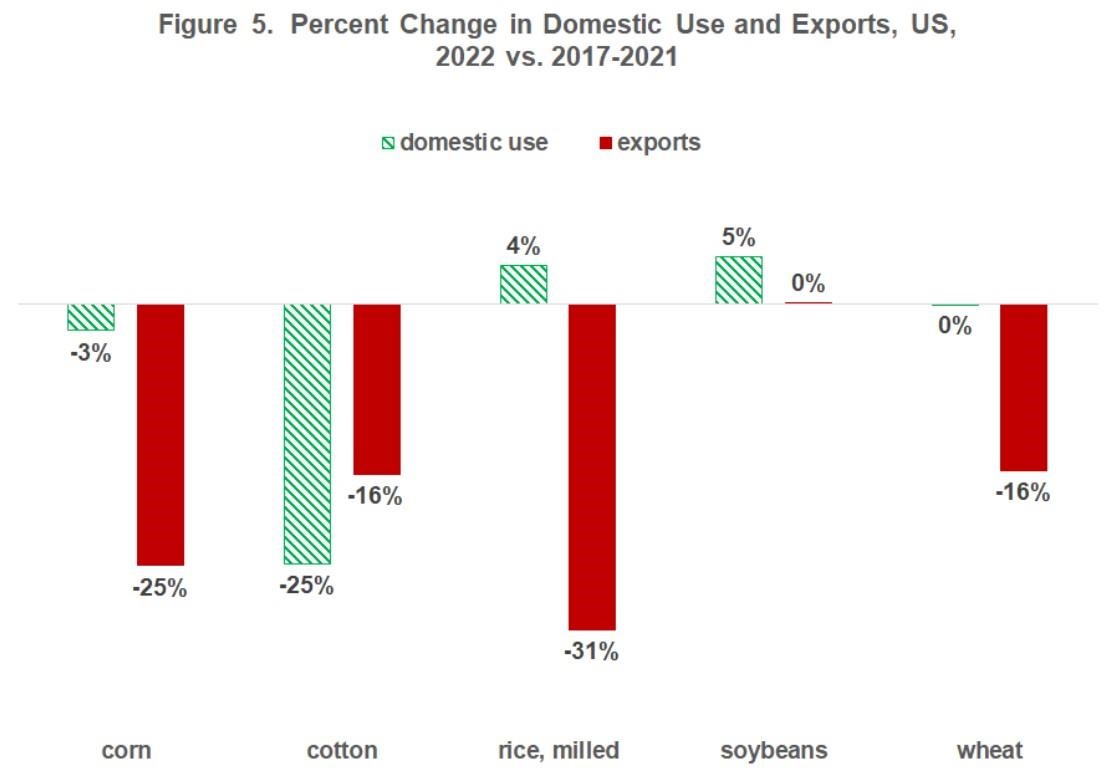By Mary Hightower
The decline in the cattle inventory in the United States probably hasn’t hit the bottom yet, said James Mitchell, extension livestock economist for the University of Arkansas System Division of Agriculture.

Mitchell was among the presenters last Friday at the Little Red River Beef Cattle Conference at the Cleburne County Livestock Auction.
Extension ag economist James Mitchell talks markets at the Little Red River Beef cattle conference in Heber Springs, Arkansas, on Feb. 17, 2023. (U of A System Division of Agriculture photo by Mary Hightower)
Drought during 2022 prompted many ranchers to liquidate herds, being unable to find hay to feed their cattle.
“Have we found the bottom? No,” Mitchell said. “It will be 2025 until we see any significant expansion on a national level. In terms of any national impact, we’re not done with herd liquidation. All the hay we were hoping to get did not arrive. I don’t think people are quite done selling cows.”
Mitchell noted that beef production has recovered from the pandemic’s precipitous drop in 2020 but is forecast to decline through 2023. With tighter beef production, expect beef prices to be slightly higher, he said.
“The quantity side of this is per-capita beef consumption, which is forecast at 56.3 pounds per person in 2023,” Mitchell said. That number compares with 59.2 pounds per person in 2022 and 58.8 pounds per person in 2021.
“Some are going to quote this as erosion in beef demand. This is not the case. This number is misleading. We should be calling this per-capita availability.”
Per-capita beef consumption is calculated by taking the amount of beef in cold storage, plus production, minus exports, plus exports, divided by the U.S. population.
Consumer spending on beef has not weakened. While not higher-than-$600-a-year in per-capita spending seen in 1980, consumers still spent $449 a year on beef in 2022.
Thinking about the future
Mitchell said ranchers looking to rebuild should do so carefully.
“If you’re going to buy cows — bred heifers — you’re going to need to think about prices you’ll get over the next six to seven years for her to pay for herself,” he said. “We talk about buy low, sell high. If we are buying heifers now, it’s like buying high and hope you’re selling higher.”
Retired livestock market reporter Nicky Pearson and Jerry Holmes, owner of Cleburne County Livestock Auction, conducted a session on market reports and calf grading.
“We’ve all seen the rollercoaster ride,” said Holmes, who has been in the cattle business all his life. He’s the third generation of his family to operate the livestock sales barn.
Pearson said when it comes to the sales ring, ranchers “need to sit in these seats and see what’s happening. See what’s bringing the money. See what you need to do to get the money.”
He said that calves headed to auction that have been castrated and received respiratory vaccinations do much better in terms of sales price.
“Every fall, the mismanaged cattle takes it on the chin,” he said. “The respiratory vaccinations were particularly important later in the year.
“It pays you to do it more in the fall than it does in the spring,” Pearson said. “You need to consider it when you’re marketing in October.”
Van Buren County Extension Staff Chair Danny Griffin noted that the Cooperative Extension Service has GoGreen as a preconditioning program for calves.
Commercial Beef Production chart, showing production from 2019 through a Feb. 2023 forecast. (U of A System Division of Agriculture image courtesy James Mitchell)
Source : uada.edu